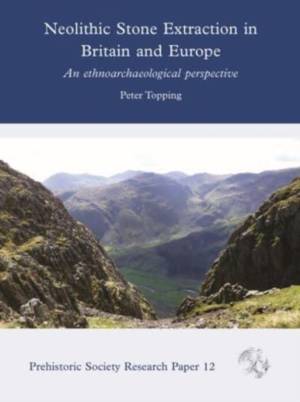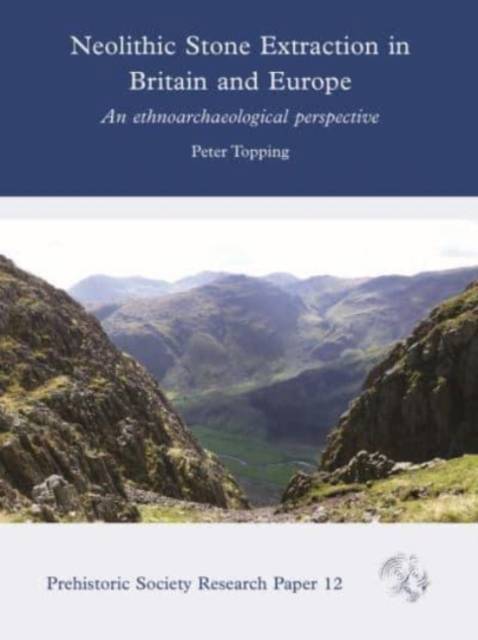
- Retrait gratuit dans votre magasin Club
- 7.000.000 titres dans notre catalogue
- Payer en toute sécurité
- Toujours un magasin près de chez vous
- Retrait gratuit dans votre magasin Club
- 7.000.0000 titres dans notre catalogue
- Payer en toute sécurité
- Toujours un magasin près de chez vous
86,95 €
+ 173 points
Description
This book focuses on the introduction of Neolithic extraction practices across Europe through to the Atlantic periphery of Britain and Ireland. The key research questions are when and why were these practices adopted and what role did extraction sites play in Neolithic society.
Neolithic mines and quarries have frequently been seen as fulfilling roles linked to the expansion of the Neolithic economy. However, this ignores the fact that many communities chose to selectively dig for certain types of stone in preference to others and why the products from these sites were generally deposited in special places such as wetlands. To address this question, 168 near-global ethnographic studies were analyzed to identify common trends in traditional extraction practices to produce robust statistics about their motivations and material signatures. Repeated associations emerged between storied locations, the organization of extraction practices, long-distance distribution of products, and the material evidence such activities left behind. This suggests that we can now probably identify mythologized/storied sites, seasonality, ritualized extraction, and the use-life of extraction site products.
The ethnographic model was tested against data from 223 near-global archaeological extraction sites, which confirmed a similar patterning in both material records. It was used to analyze the social context of 79 Neolithic flint mine and 51 axe quarry excavations in Britain and Ireland and to review their European origins. The evidence that emerges confirms the pivotal role played by Neolithic extraction practices in European Neolithization and that the interaction of indigenous foragers with migrant miners/farmers was fundamental to the adoption of the new agropastoral lifestyle.
Neolithic mines and quarries have frequently been seen as fulfilling roles linked to the expansion of the Neolithic economy. However, this ignores the fact that many communities chose to selectively dig for certain types of stone in preference to others and why the products from these sites were generally deposited in special places such as wetlands. To address this question, 168 near-global ethnographic studies were analyzed to identify common trends in traditional extraction practices to produce robust statistics about their motivations and material signatures. Repeated associations emerged between storied locations, the organization of extraction practices, long-distance distribution of products, and the material evidence such activities left behind. This suggests that we can now probably identify mythologized/storied sites, seasonality, ritualized extraction, and the use-life of extraction site products.
The ethnographic model was tested against data from 223 near-global archaeological extraction sites, which confirmed a similar patterning in both material records. It was used to analyze the social context of 79 Neolithic flint mine and 51 axe quarry excavations in Britain and Ireland and to review their European origins. The evidence that emerges confirms the pivotal role played by Neolithic extraction practices in European Neolithization and that the interaction of indigenous foragers with migrant miners/farmers was fundamental to the adoption of the new agropastoral lifestyle.
Spécifications
Parties prenantes
- Auteur(s) :
- Editeur:
Contenu
- Nombre de pages :
- 200
- Langue:
- Anglais
- Collection :
Caractéristiques
- EAN:
- 9781789257052
- Date de parution :
- 14-12-21
- Format:
- Livre relié
- Format numérique:
- Genaaid
- Dimensions :
- 216 mm x 277 mm
- Poids :
- 975 g

Les avis
Nous publions uniquement les avis qui respectent les conditions requises. Consultez nos conditions pour les avis.






